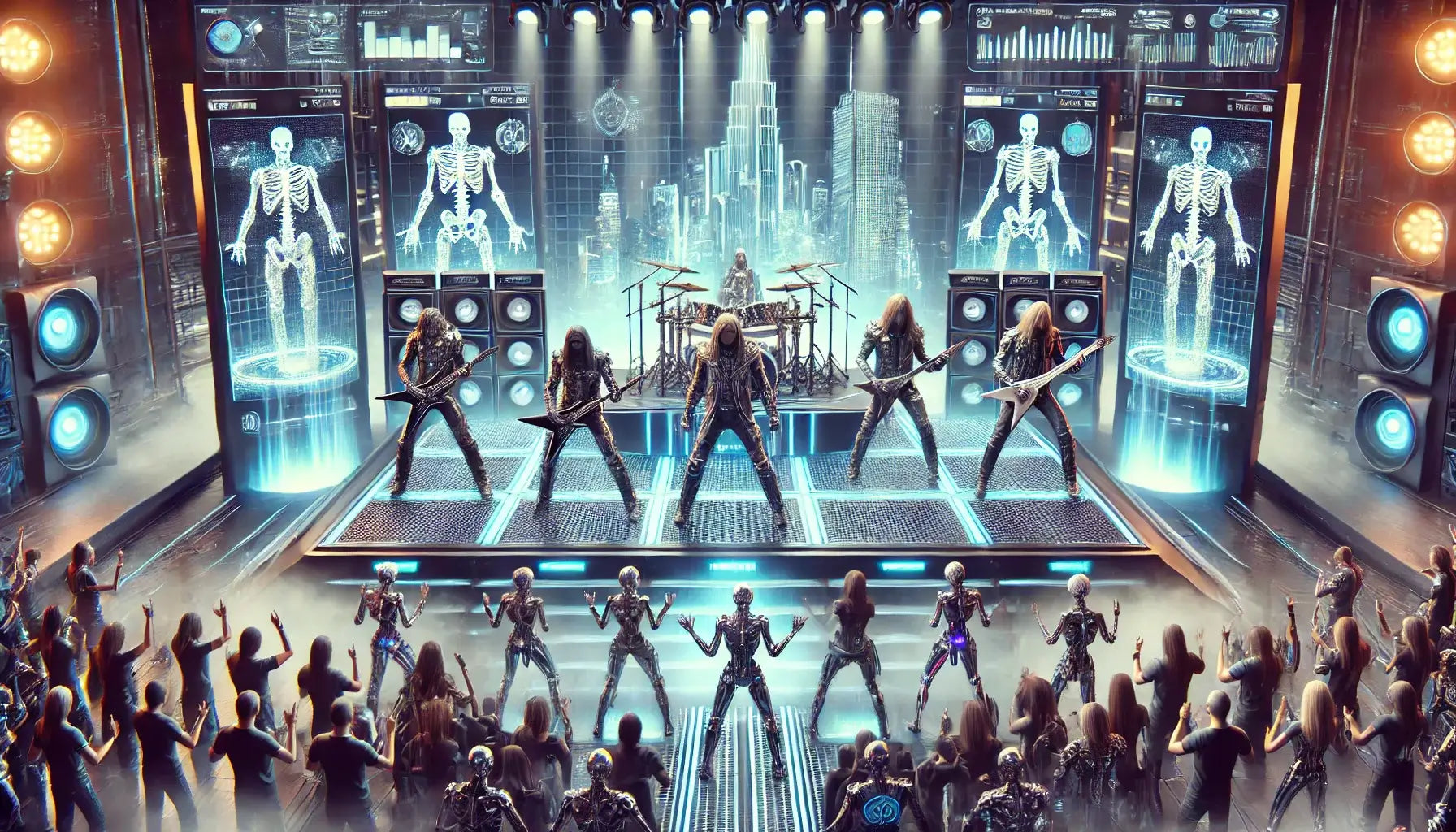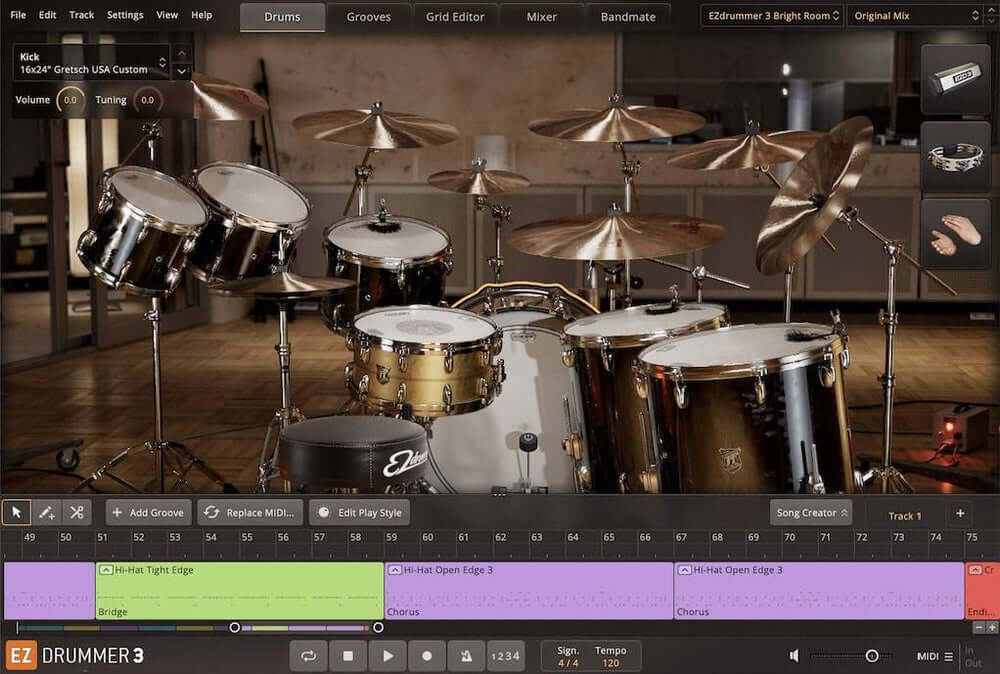The Future of Metal: A Comprehensive Look

Metal, a genre born in the late 1960s and early 1970s, has been a driving force in the music industry for decades. Known for its powerful sound, technical prowess, and passionate fanbase, metal has constantly evolved, pushing boundaries and challenging norms. As we look to the future, the question arises: what lies ahead for this enduring genre? This article delves into the potential trajectories of metal music, exploring how technological advancements, cultural shifts, and global influences might shape its sound and impact in the years to come.
The Current State of Metal
Before we can predict the future, we must understand the present. Metal today is a diverse and global phenomenon, encompassing a wide range of subgenres from the more traditional heavy metal to extreme subgenres like black metal and grindcore. The genre has maintained its core fanbase while continually attracting new listeners through its various offshoots and fusions.
In recent years, we've seen a resurgence of interest in traditional heavy metal, with bands like Ghost and Power Trip garnering critical acclaim and commercial success. Simultaneously, extreme metal continues to push sonic boundaries, with acts like Zeal & Ardor blending black metal with African-American spirituals, creating entirely new soundscapes.
The metal scene has also become increasingly diverse, with more women and people of color taking center stage. Bands like Oceans of Slumber, fronted by Cammie Gilbert, and Sepultura, led by Derrick Green, exemplify this shift towards greater representation in the genre.
Evolving Subgenres and Fusion
One of the most exciting aspects of metal's future is the continued evolution and fusion of subgenres. We're already seeing the emergence of new hybrid styles that blend metal with other genres:
- Blackgaze: A fusion of black metal and shoegaze, pioneered by bands like Deafheaven and Alcest.
- Djent: A progressive metal offshoot characterized by its use of polyrhythmic patterns and extended-range guitars.
- Nu-metalcore: A revival of nu-metal elements combined with modern metalcore, as heard in the music of Code Orange and Vein.fm.
As metal continues to cross-pollinate with other genres, we can expect even more innovative sounds to emerge. The integration of electronic elements, world music influences, and even pop sensibilities will likely play a significant role in shaping the metal of tomorrow.
Technological Advancements in Metal
Technology has always been a crucial factor in the development of metal music, from the invention of the electric guitar to the advent of digital recording. Looking ahead, several technological advancements are poised to revolutionize metal:
- AI-assisted composition: While controversial, AI tools could be used to generate riffs, solos, or even entire song structures, potentially sparking new creative directions.
- Virtual and augmented reality: These technologies could transform the live music experience, allowing fans to attend concerts virtually or enhancing in-person shows with immersive visual elements.
- Blockchain and NFTs: These technologies may offer new ways for artists to distribute music and connect with fans, potentially disrupting traditional record label models.
- Advanced music production software: As production tools become more sophisticated and accessible, we may see a rise in bedroom producers creating professional-quality metal recordings.
- New instrument technologies: Innovations in guitar and drum technology, such as hybrid electronic-acoustic kits or guitars with built-in effects processing, could expand the sonic possibilities for metal musicians.
Global Influences and Diversification
Metal has always been a global phenomenon, but the internet age has accelerated cross-cultural exchange. This trend is likely to continue, leading to:
- Increased visibility for non-Western metal scenes: Countries like Indonesia, India, and Brazil have thriving metal scenes that are gaining international recognition.
- Incorporation of diverse musical traditions: We may see more bands integrating elements from their local musical heritage into metal, creating unique regional variants.
- Multilingual metal: As the genre becomes more globally interconnected, we might see a rise in bands performing in languages other than English or their native tongues.
- Cultural fusion: The blending of different cultural aesthetics and themes in metal imagery and lyrical content could lead to fresh and exciting artistic expressions.
The Impact of Streaming and Social Media
The rise of streaming platforms and social media has already dramatically altered the music industry landscape, and their influence on metal's future cannot be overstated:
- Discovery algorithms: As AI-driven recommendation systems improve, they could help niche metal subgenres find their audience more easily.
- Direct artist-fan interaction: Social media platforms allow for unprecedented levels of connection between bands and their fans, potentially changing how music is created and marketed.
- Playlist culture: The growing importance of playlists on streaming platforms may influence songwriting, with more emphasis on creating tracks that grab listeners' attention quickly.
- Independent distribution: The ease of self-publishing music online could lead to a more decentralized metal scene, with less reliance on traditional record labels.
Metal in Popular Culture
Despite its often niche status, metal has periodically broken into mainstream popular culture. This trend may continue and evolve in several ways:
- Soundtracks and sync licensing: Metal's intense sound makes it perfect for action scenes in movies, TV shows, and video games, potentially exposing the genre to new audiences.
- Fashion and aesthetics: Metal's visual style continues to influence fashion, and this cross-pollination may increase, bringing elements of metal culture to a broader audience.
- Collaborations with mainstream artists: As genre boundaries continue to blur, we might see more unexpected collaborations between metal artists and mainstream pop or hip-hop acts.
- Metal-inspired media: The success of metal-centric shows like "Metalocalypse" or films like "Heavy Trip" could pave the way for more metal-themed content in various media.
Environmental and Social Consciousness in Metal
As global awareness of social and environmental issues grows, metal is likely to reflect these concerns:
- Eco-metal: Bands focusing on environmental themes may gain prominence, using their platform to raise awareness about climate change and other ecological issues.
- Social justice: More metal acts may incorporate messages of social justice and equality into their music, addressing issues like systemic racism, LGBTQ+ rights, and economic inequality.
- Mental health awareness: Given metal's history of addressing dark and difficult topics, the genre may play a significant role in destigmatizing mental health issues.
- Sustainable touring and merchandising: As environmental concerns grow, we may see a shift towards more sustainable practices in touring and merchandise production.
The Future of Live Performances
Live shows have always been the lifeblood of metal, and they're likely to evolve in several ways:
- Hybrid events: Combining in-person and virtual elements could become more common, allowing fans from around the world to participate in live shows.
- Immersive experiences: Advanced stage designs, holograms, and interactive elements could create more engaging and memorable live performances.
- Boutique festivals: Smaller, more focused festivals catering to specific subgenres or local scenes might gain popularity alongside major metal festivals.
- Health and safety considerations: In a post-pandemic world, there may be lasting changes to how live events are organized and experienced.
Emerging Artists and New Frontiers
The future of metal will be shaped by the next generation of artists. Some emerging trends and acts to watch include:
- Lingua Ignota: Combining elements of metal, industrial, and avant-garde music to create a unique and challenging sound.
- Spiritbox: Blending metalcore with electronic and pop elements, pushing the boundaries of what metal can be.
- Liturgy: Continuing to evolve black metal with experimental and philosophical approaches.
- Code Orange: Pushing metalcore into new territories with their incorporation of industrial and electronic elements.
- Jinjer: Showcasing technical prowess and genre-blending from the Ukrainian metal scene.
These artists and others like them are likely to inspire the next wave of metal innovation.
Challenges Facing the Metal Scene
Despite its resilience, the metal genre faces several challenges that could shape its future:
- Aging fanbase: Metal will need to continue attracting younger fans to ensure its long-term viability.
- Financial sustainability: With changes in how music is consumed and monetized, metal artists may need to find new ways to make their careers financially viable.
- Oversaturation: The ease of releasing music online has led to an abundance of metal bands, making it harder for artists to stand out.
- Balancing tradition and innovation: The metal community will need to navigate the tension between honoring its roots and embracing new directions.
- Inclusivity: Continuing to make the metal scene more welcoming to diverse participants will be crucial for its growth and relevance.
Conclusion
The future of metal is as bright as it is uncertain. As a genre that has consistently defied expectations and pushed boundaries, metal is well-positioned to adapt to the changing musical landscape. From technological innovations to cultural shifts, the coming years promise to bring exciting developments to the world of metal.
While the core elements that have defined metal for decades – its intensity, technical skill, and passionate fanbase – are likely to remain, we can expect to see the genre continue to evolve in surprising and exhilarating ways. New subgenres will emerge, global influences will reshape the sound of metal, and technological advancements will open up new possibilities for creation and performance.
As metal navigates the challenges ahead, its ability to address social issues, adapt to new technologies, and welcome diverse voices will be key to its continued relevance and growth. The future of metal lies in the hands of innovative artists, dedicated fans, and a global community that continues to find power and meaning in this ever-evolving genre.
Whatever form it takes, one thing is certain: the spirit of metal – its rebellion, its intensity, and its community – will continue to resonate with listeners around the world, ensuring that the genre remains a vital and vibrant force in the music world for years to come.










1 comment
I’m 62 about to have heart transplant soon at UW Seattle, Heavy Metal is Alive & Kicking , I create experimental and traditional rock styles from scratch, heavy duty synthesizer and dark country rock , in the 70’s small stages is the manger of creation, now with the collapsed music industry, stages are coming back , larger outdoor stages, progressive and growling, At Little Creek Casino in Washington State last week I seen men in their 70’s jumping screaming and flashing the bull horns sign to Hells Bells female tribute Band.
Long Live Rock , Long Live Cool Musicians. The music I create today would make the music industry imbarassed for closing it’s doors. No miracle, I just simply knew that I would have to be better than the best.
Leave a comment
All comments are moderated before being published.